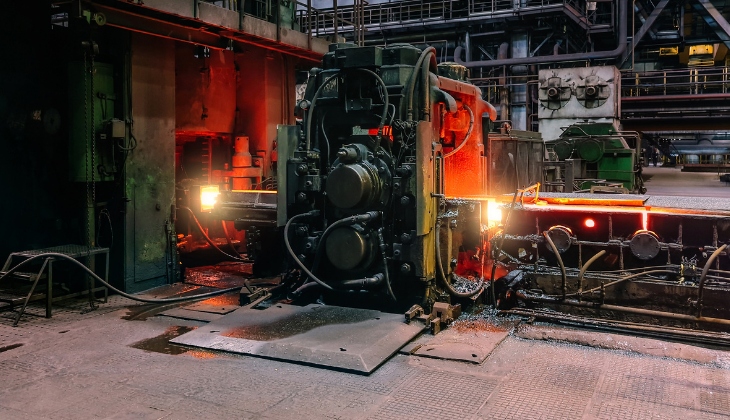Search on site

Rolling is one of the backbone processes of the modern steel industry. However, very few people truly understand how complex and fascinating this process is.
Here’s where the science comes into play. The crystalline structure of steel undergoes significant changes during the rolling process. The forces of tension and compression reorganize the internal structure of the steel.
The result? Stronger and more durable steel.
Most of us have a general idea about shaping steel. However, rolling is the art of transforming steel into fine grains. So, how does it work?
First Step: Heat Treatment
The first step of rolling is heating the steel to high temperatures. This process alters the crystalline structure of the steel, making it more flexible. The more flexible the steel is, the easier it is to shape.
Rolling is one of the most effective methods used to shape steel. But why is it so important? What is its primary purpose?
The main goal of rolling is to bring steel into the desired form. But this is just the beginning.
In every industry, rolling allows for the use of strong, durable, and aesthetically pleasing metals and steels. This way, the needs of the modern world are met, and innovations for the future are developed.
The transformation of metals through this process plays a significant role in the industrial and technological world.
The rolling process offers numerous advantages, including enhanced strength, improved surface quality, cost-effective production, a broad product range, high precision, and eco-friendly manufacturing. These features make rolling an indispensable method in the metal processing industry, ensuring that the demands of modern industries are met and innovative solutions are developed.
The hot rolling process of steel is carried out at high temperatures and consists of several key stages:
In cold rolling, steel is shaped at room temperature. This process enhances the surface quality of the steel and produces thinner, more precise products.
Cold rolling is used to manufacture round, square, hexagonal, and flat steels, as well as thin and precise metal sheets, foils, and wires.
Thin sheets produced through cold rolling are widely used in home appliances and kitchenware. Cold rolling offers significant advantages in terms of surface quality and dimensional accuracy.
Rolling is performed using two main methods: hot rolling and cold rolling. What are the differences between these two methods? When should each be used?
Hot rolling involves shaping metal above its recrystallization temperature. Here are the details:
Hot rolling is commonly used for producing large and thick metal sheets, beams, and round, square, and flat steel bars.
Surface Quality and Tolerances:
Cold rolling, on the other hand, shapes metal at room temperature.
Surface Quality and Precision:
Rolling involves various rolling mill systems to shape metal into specific thicknesses and forms. These systems are chosen based on metal properties, final product requirements, and production scale. Here are the main rolling mill systems:
• Structure: It consists of a large number of small rolls placed closely together.
• Application Area: It is used in the production of thin sheets that require high strength.
• Structure: It consists of two work rolls, two intermediate backup rolls, and two outer backup rolls, making a total of six rolls.
• Application Area: It is used in production processes that require high precision and quality.
Rolling mill systems vary according to production requirements and the properties of the metal. The two-high mill system offers a simple and economical solution, while the four-high and cluster mill systems are ideal for processes that require high precision and strength. Each of these systems plays an important role in the world of metalworking and is used in different application areas.
Rolling can be performed in many different types. Here are some of them:
• Bar Rolling: Round, square, hexagonal, and flat steel bars are produced. It is used in industries ranging from automotive to defense. • Plate Rolling: Used in the production of thin steel sheets. It is commonly used in the automotive and aerospace industries.
• Profile Rolling: Production of steel bars in various profile shapes. It is frequently used in the construction industry.
• Ring Rolling: Used to produce steel parts in ring shapes. It is preferred in the production of products like bearings and flanges.
Rolling can be an energy-intensive process. However, the industry is continuously working to increase energy efficiency and reduce environmental impacts. Recycling and waste management play an important role in modern rolling mills.
Conclusion
Rolling is an incredible process that unveils the strength and potential of steel. Thanks to the combination of technology and science, rolling processes are becoming increasingly efficient and environmentally friendly. The transformation of steel in the industrial world will continue with new innovations in the future.
Here is the amazing transformation journey of steel! Now, look around and discover every place where rolling has touched!